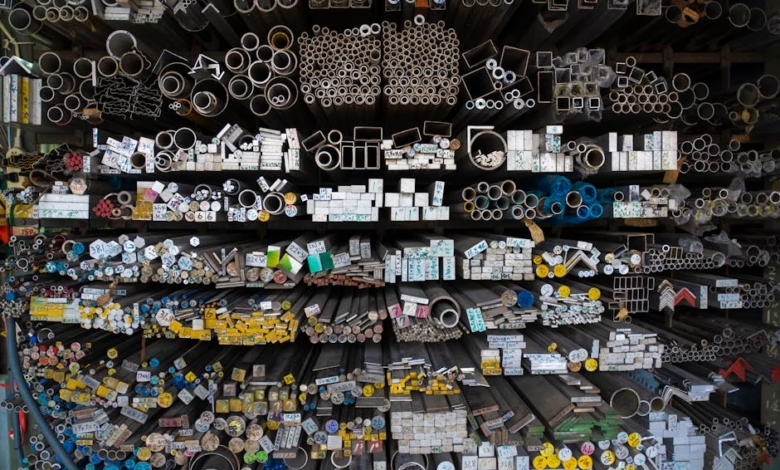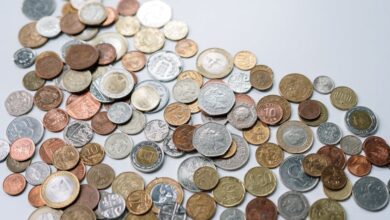Navigating Metal Prices and Trends in 2024: Insights on Precious and Industrial Metals for Investors

In an ever-evolving global economy, the landscape of metal prices and trends is a crucial aspect for investors, manufacturers, and industries alike. From precious metals like gold and silver to vital industrial metals such as copper and aluminum, understanding these market movements can provide valuable insights for both seasoned investors and newcomers in the field. As we delve into the complexities of metal commodities, we will explore the comprehensive overview of precious and industrial metals, highlighting significant trends that impact their value. Additionally, we will discuss price forecasts and market movements, focusing on base metals and rare earth metals that are pivotal for modern technology and sustainable practices. The future of metal investing is also on the horizon, with opportunities arising in sustainable metal production and innovative metal recycling methods. By navigating through these key themes, this article aims to equip readers with the knowledge necessary to make informed decisions in the dynamic world of metallurgy and metal investments.
- 1. Understanding Metal Trends: A Comprehensive Overview of Precious and Industrial Metals
- 2. Price Forecasts and Market Movements: Insights into Base Metals and Rare Earth Metals
- 3. The Future of Metal Investing: Opportunities in Sustainable Production and Metal Recycling
1. Understanding Metal Trends: A Comprehensive Overview of Precious and Industrial Metals
Understanding metal trends is crucial for investors, manufacturers, and consumers alike, as these fluctuations can significantly impact various industries, from construction to technology. Metals can be broadly categorized into precious metals and industrial metals, each with unique market dynamics.
Precious metals, such as gold, silver, platinum, and palladium, are often sought after for investment and jewelry, driving demand in both financial markets and consumer sectors. Gold investing, for instance, tends to increase during economic uncertainties, as investors view it as a safe haven. Silver, on the other hand, serves dual purposes in both jewelry metals and as an industrial component, particularly in electronics and solar energy applications.
Industrial metals, which include ferrous metals like steel and non-ferrous metals such as aluminum, copper, and zinc, are vital for construction, automotive, and aerospace industries. The demand for these metals is closely tied to global economic performance and infrastructure projects. Base metals like copper are particularly significant, as they are essential for electrical wiring and renewable energy technologies. With the rise of sustainable metal production practices, industries are increasingly looking at metal recycling as a method to meet demand while minimizing environmental impact.
Rare earth metals play a crucial role in advanced technologies, including electric vehicles and renewable energy systems, highlighting their importance in the energy metals sector. Similarly, battery metals like lithium are integral to the growing electric vehicle market, prompting a surge in metal mining and metallurgy to secure these critical resources.
The trends in metallurgy also affect metal fabrication and the development of metal alloys, which are essential for enhancing performance and durability in various applications. For example, construction metals must meet stringent standards to resist metal corrosion, while aerospace metals require high strength-to-weight ratios for efficient aircraft design.
As manufacturing techniques evolve, the advent of 3D printing metals is reshaping the landscape, allowing for more innovative designs and reducing material waste. Observing these metal trends provides insights into market movements and price forecasts, enabling stakeholders to make informed decisions in the ever-changing metals landscape.
2. Price Forecasts and Market Movements: Insights into Base Metals and Rare Earth Metals
The landscape of metal prices is continuously evolving, influenced by various factors such as supply and demand, geopolitical events, and technological advancements. Understanding price forecasts and market movements for both base metals and rare earth metals is crucial for investors and industry stakeholders.
Base metals, including copper, aluminum, zinc, and steel, play a vital role in industrial applications and construction. With the global push towards sustainable metal production, the demand for these industrial metals is expected to increase. For instance, copper is essential for electrical applications, and as the world transitions to renewable energy solutions, its price is likely to rise due to heightened demand in energy-related projects. Similarly, aluminum's lightweight properties make it a favored choice in automotive and aerospace industries, driving prices up as manufacturers seek to enhance fuel efficiency.
On the other hand, rare earth metals, such as lithium, platinum, and palladium, are critical for advanced technologies, including battery production and electronics. With the surge in electric vehicle (EV) adoption, lithium has seen significant price increases, reflecting its importance in battery metals. The transition to green technologies and energy storage solutions indicates that rare earth metals will continue to be in high demand, impacting their market trends.
Additionally, the metal recycling industry is gaining traction as sustainability becomes a key focus across sectors. Metal recycling not only helps in reducing waste but also contributes to the supply of ferrous and non-ferrous metals, potentially stabilizing prices in the long run. This trend aligns with the increasing interest in metallurgy and metal fabrication processes that prioritize sustainable practices.
Investors in precious metals, such as gold and silver, should also keep an eye on market movements, as these metals often serve as safe havens during economic uncertainty. Gold investing typically rises in times of market volatility, whereas silver investing can fluctuate based on industrial demand and investment trends.
In summary, the interplay between base metals and rare earth metals, coupled with trends in metal recycling and sustainable practices, will significantly shape metal prices in the coming years. Monitoring these dynamics is essential for understanding the broader market landscape and making informed investment decisions in metal commodities.
3. The Future of Metal Investing: Opportunities in Sustainable Production and Metal Recycling
As we look towards the future of metal investing, opportunities in sustainable production and metal recycling are becoming increasingly prominent. The global push for sustainability has highlighted the importance of reducing the environmental impact of metal mining and production. This shift is particularly relevant for both industrial metals and precious metals, as investors seek to align their portfolios with ethical practices.
Sustainable metal production focuses on minimizing waste and energy consumption while maximizing efficiency. Innovations in metallurgy are driving this change, allowing for more eco-friendly extraction and fabrication processes. For instance, advancements in metal alloys can lead to stronger, lighter materials that are essential in sectors such as aerospace and automotive, where efficiency and performance are paramount.
Metal recycling plays a crucial role in this sustainable future. By reclaiming valuable resources from discarded products, the industry reduces the need for virgin materials, which is especially important for base metals like aluminum, copper, and zinc. The recycling of precious metals, such as gold and silver, not only supports the jewelry and electronics industries but also lowers the demand for new metal mining, which can be environmentally detrimental.
Rare earth metals, essential for technologies ranging from smartphones to renewable energy systems, also benefit from increased recycling efforts. As the demand for these metals grows, the need for sustainable sourcing becomes critical. Investors who focus on companies leading the charge in metal recycling and sustainable production can capitalize on the rising market for energy metals, battery metals, and other critical materials.
Furthermore, the advent of 3D printing metals offers exciting investment opportunities. This technology allows for the creation of complex metal structures with minimal waste, aligning perfectly with sustainability goals. As industries adopt 3D printing in construction and manufacturing, investors can expect a surge in demand for specific metals suited for additive manufacturing.
In summary, the future of metal investing will be heavily influenced by the trends of sustainable production and recycling. As the market evolves, investors should keep an eye on innovative companies that are not only focusing on profitability but also on responsible practices in metal mining and fabrication. By doing so, they can position themselves to benefit from the dynamic landscape of metal commodities while contributing to a more sustainable world.
In conclusion, monitoring metal prices and trends is essential for both investors and industry professionals navigating the complex landscape of precious and industrial metals. As we've explored, understanding the dynamics of base metals such as copper, aluminum, and zinc, alongside the unique attributes of rare earth metals and their applications in technology and energy, is crucial for making informed decisions. The future of metal investing looks promising, particularly with the rise of sustainable metal production and metal recycling practices that aim to reduce waste and promote environmental responsibility.
As we continue to witness advancements in metallurgy, metal fabrication, and innovative applications such as 3D printing metals, opportunities abound within sectors like aerospace, automotive, and construction. Gold investing and silver investing remain popular among investors seeking stability, while the demand for battery metals like lithium and cobalt is expected to surge with the shift towards electric vehicles and renewable energy sources.
By staying informed about market movements and price forecasts, as well as emerging trends in metal corrosion resistance and refractory metals, stakeholders can position themselves strategically within the evolving metal commodities landscape. Whether you're focusing on investment opportunities or the practical implications of metal mining and production, embracing these trends will be vital for success in a rapidly changing market.
References:
[To be added based on content and sources used in the article]




